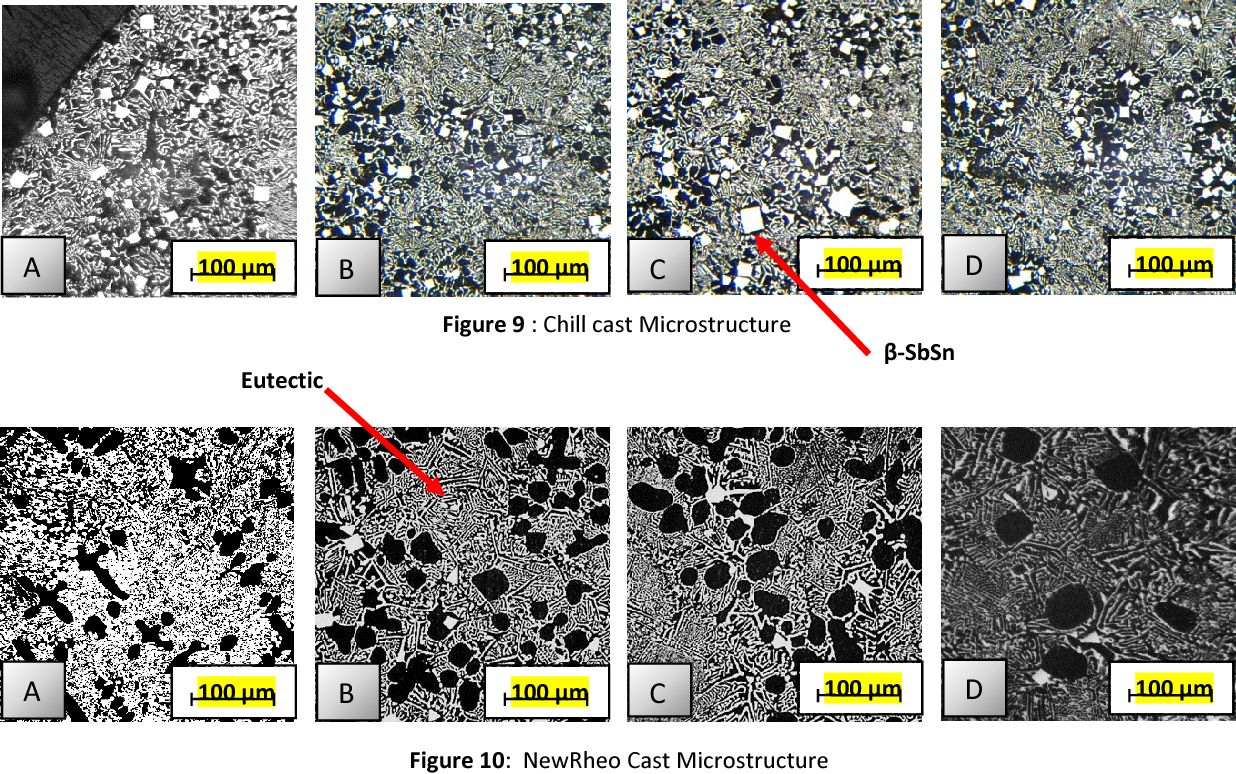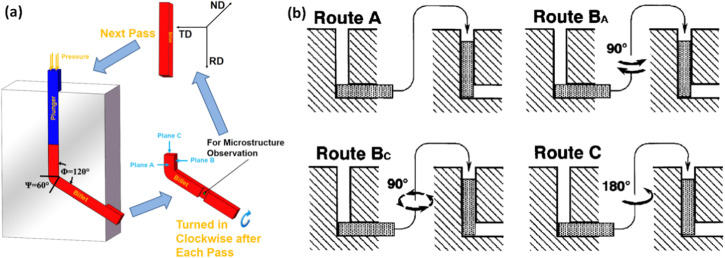
Enhancement the Microstructure and Mechanical Properties for Pb-Sn-Sb Alloys by Using Equal Channel Angular Extrusion
Enhancement the Microstructure and Mechanical Properties for Pb-Sn-Sb Alloys by Using Equal Channel Angular Extrusion
Lect. Dr. Kadhim A. Abed
College of Engineering / University of Anbar
https://www.iasj.net/iasj/article/140214
This study aims to enhance the compression strength in one type of Pb-Sn-Sb alloys which wellknown by (Babbitt-ASTM B23 Alloy 13). The processing doing via equal channel angular extrusion technique. Three casting were implemented to manufacture the alloy; Chill Casting (CC), New Rheocasting (NRC) and Gravity Die Casting (GDC). The microscope examination shows that the microstructures contain two phases, α-Pb and cubic shaped intermetallic compound (β-SbSn) in a matrix of ternary phases. CC was fine equiaxed as well as NRC, while in GDC was a dendrite α-Pb phase with remaining β-SbSn phase as a cubic shape. Higher mechanical properties in compression were recorded for Gravity die casting (12.7 %) while the NRC registered the highest value in yield strength (11.7 %). On the other hand, the casting techniques had a slight difference in Young's modulus. The other resulted data like hardness showed that NRC is the first reading (12.55 %) and then gravity casting recorded as second score comparing with other (11.79 %), The results showed aslo that increasing forming temperature during angular extrusion has an adverse effect on compression strength. The study concluded that microstructural change caused by ECAP softens the material due to the break-up the original precipitate and accelerate from the dynamic recrystallization.

Conclusion
• The study pointed for microstructural change caused by ECAP softens the material due to the break-up the original precipitate and accelerate from the dynamic recrystallization.
• The materials that were processed at elevated temperatures possess a larger grain size than those that were processed at room temperature. Also, the disorientation of the newly formed grain boundaries tends to be lower at elevated temperatures than at room temperature.
• Increasing forming temperature during angular extrusion has a negative effect on compression, yield strength and hardness.
• With decreasing extrusion angle, the grain size is refined, and the mechanical properties at room temperature are improved effectively.
• Normally applied load will be increased with decreasing the angle of extrusion angle.
• There is no obvious relation between the relative magnitude of either the ultimate strength or yield point and the both type of hardness (Brinel and Vickers).The hardness of B23-alloy 13 drops off very rapidly with increasing temperature.




.png)